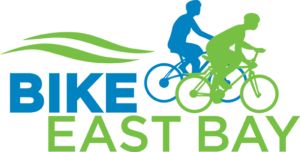Ross “Hank” Stratford
David “Shoe” Shuey
Ted Meriam
Jim Diaz
Ross “Hank” Stratford
David “Shoe” Shuey
Ross “Hank” Stratford
David “Shoe” Shuey
Ted Meriam
Jim Diaz
Ross “Hank” Stratford
David “Shoe” Shuey
1. Do you use a bicycle for transportation? If so, for what purposes (commuting, recreation, errands) and how often? Please indicate how you most commonly commute to work. (300 words or less) I use my bicycle only for exercise and recreation as my job is 30 miles away in Oakland and I must take my car to work since as an attorney I travel all over the bay area and sacramento areas for appearance, meetings, depositions. During the summer I take several of my five children riding on Clayton’s extensive trail system and we often will go to grocery store and pick up items that can fit in the kid carrier I use.
2. Do you feel your city is a bicycle-friendly city? Please explain (300 words or less) Clayton is extremely bike friendly, with extensive and well maintained trail system as well as clearly marked bike paths on the roadways.
AB 32, California’s landmark Global Warming Solutions Act, was enacted in 2006 and calls for a reduction in Greenhouse Gases (GHG) to 1990 levels by the year 2020–a 25% reduction from 2005 levels. In addition, the Air Resources Board currently is selecting GHG reduction targets for the Bay Area. What will you do as a City Councilmember to reduce the City’s transportation-related GHG’s? (300 words or less) I am very interested in preserving our world for our children and their children and so on and so I have a commitment to reducing greenhouse gases. I will continue to encourage carpooling and public transportation as well as explore opportunities to encourage and incentivise solar energy.
3. When making streets safe for bicycling, as called for in the Bicycle Plan, there are often conflicts between the needs for more parking, sufficient traffic flow, bus service, and safe bike access. This particularly happens on busy arterials where buses run and where there are many businesses that want sufficient parking for their customers. Yet, bicyclists need to patronize these businesses as well use the streets to get to and from work. These streets are often the most direct routes and the safest for cyclists to use at night, which is why they are included in the City’s Bicycle Plan. Knowing that in many cases, streets will likely have to be reconfigured to accommodate bicyclists, reducing the number of conventional car lanes and/or converting space for on-street parking to make room for bicycle right-of-way, what ideas do you have to make our busy arterial streets safe for bicycling? (300 words or less); Our City has excellent bicycle lanes and safe streets and so I do not believe we will need reconfiguring. However, if necessary, I would ask our city engineer and staff for options to take into account all concerns.
4. A world-wide trend to enhance the quality of city life and support economic development has led countless cities to create car-free space on city streets, providing opportunities for people to bike, walk and play safely in their neighborhoods. They have proven to be extremely popular around the East Bay. As Councilmember, will you commit to expanding pedestrian zones and to significantly increase funding for more car-free spaces in town? Yes/No We have explored pedestrian malls on several downtown streets and I am open and receptive to the idea. Clayton does not really fit the profile as to needing more car free spaces, however, as we have a very small downtown area with the majority being residential.
5. At the current rate of implementation, the Bicycle Plan will take many years to implement. A current challenge is limited staff time to devote to bicycle plan implementation. Will you commit to increasing staffing and resources directed toward implementation of the Bicycle Plan? Yes/No No. As a small city and as outline above we do not have the resources to devote more time to this. We will continue to be receptive to ideas and issues brought to us by groups.
A major safety and circulation problem is created by one-way streets, which are generally designed to move more traffic and have a negative effect of making the street a less desirable place to live and work. In an effort to improve the livability and economic vitality our City, do you support returning one-way streets back to two-way travel? Yes/No We have no one way streets in Clayton.
6. For generations, state, regional and even local policies have prioritized traffic flow and space for private motor vehicles, to the detriment of walking, bicycling and transit. Around the world, many cities are reversing this priority and using the following heirarchy in transportation planning; pedestrians first, then bicyclists, transit vehicles, and lastly private motor vehicles. If elected, will you support this priority hierarchy in the City? Yes/No Clayton has always been and will continue to have a high priority to walking and bike trails within the city. We are one of the top cities in the state for our trail system.
7. Research has shown that 20 mph is the upper limit at which motorists can safely perceive and react to pedestrians and bicyclists. In fact, according to the Federal Highway Administration, a pedestrian is 8 times more likely to be killed in a collision with a car going 30 mph than with a car going 20 mph. Many cities have established maximum speeds of 20 mph for this very reason. If elected, would you support taking measures to ensure maximum speeds on city streets of 20mph? Yes/No Yes
8. Please respond to the following short questions:
Do you support establishing a bike parking zoning ordinance for new residential and commercial development? Yes/No yes
Do you support establishing a goal of cutting bicycle crash rates in half over the next four years? Yes/No yes
Do you support increasing local funding for bicycle projects? Yes/No yes
Do you support doubling the bicycle mode share in the City in the next four years? Yes/No n/a
Do you support establishing an effective pedestrian safety campaign in the City? Yes/No yes
Do you support expanding the traffic calming program to limit thru traffic in residential neighborhoods? Yes/No yes
Alameda County has started work on Sustainable Communities Strategies as part of SB 375, which requires the state of California to reduce vehicle miles traveled (VMT). Do you support the goal of reducing the number of vehicle miles traveled? Yes/No; yes
9. Would you be willing to spend a few hours one weekend “in the saddle” touring the city’s most challenging bicycle routes with a local bicycling advocate? Yes/No yes
10. What other ideas do you have to increase the number of people bicycling in town? (300 words or less); We are encouraging our local community service provider and interested volunteers to plan, promote and put on a bicycle race/rally in town.


